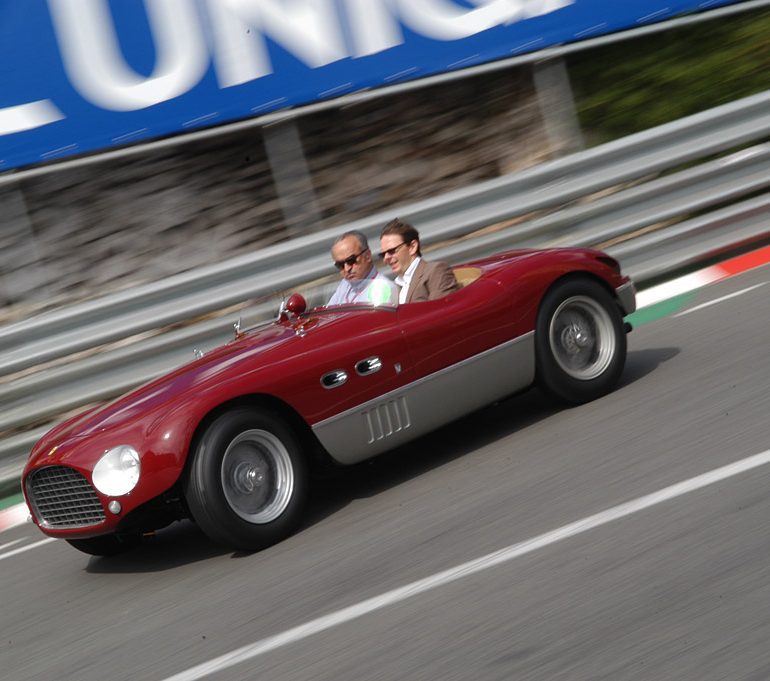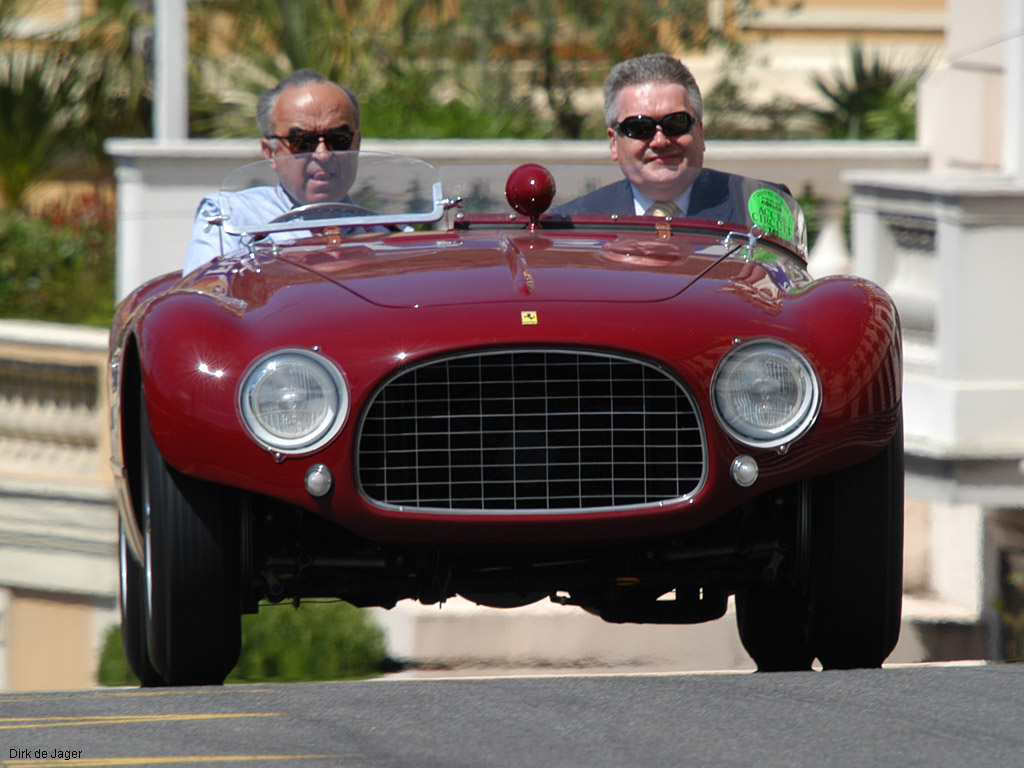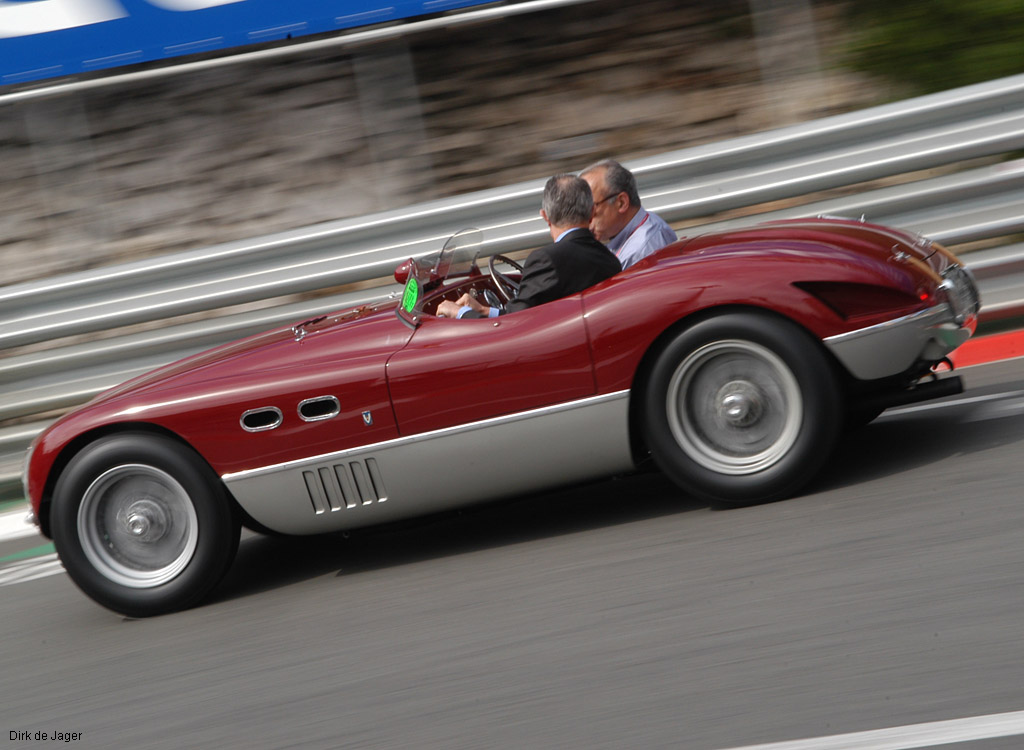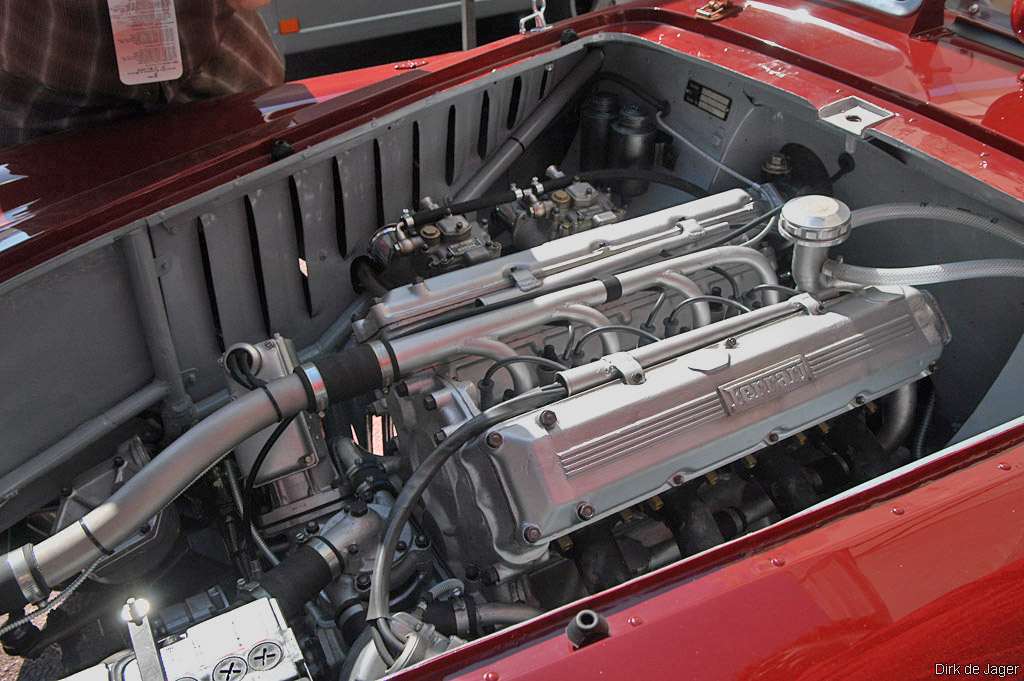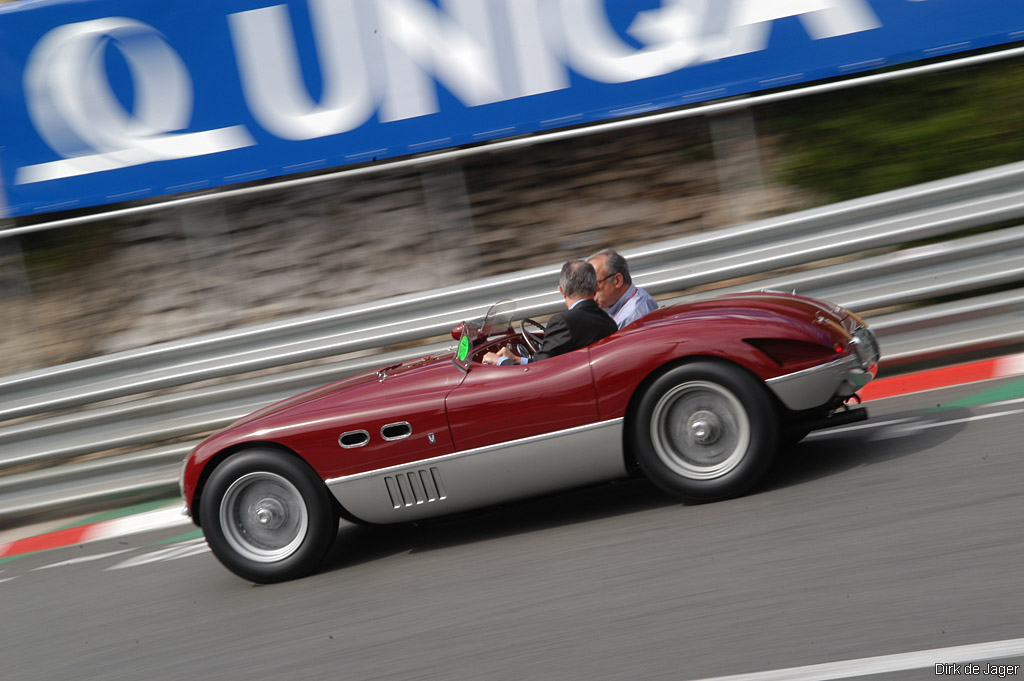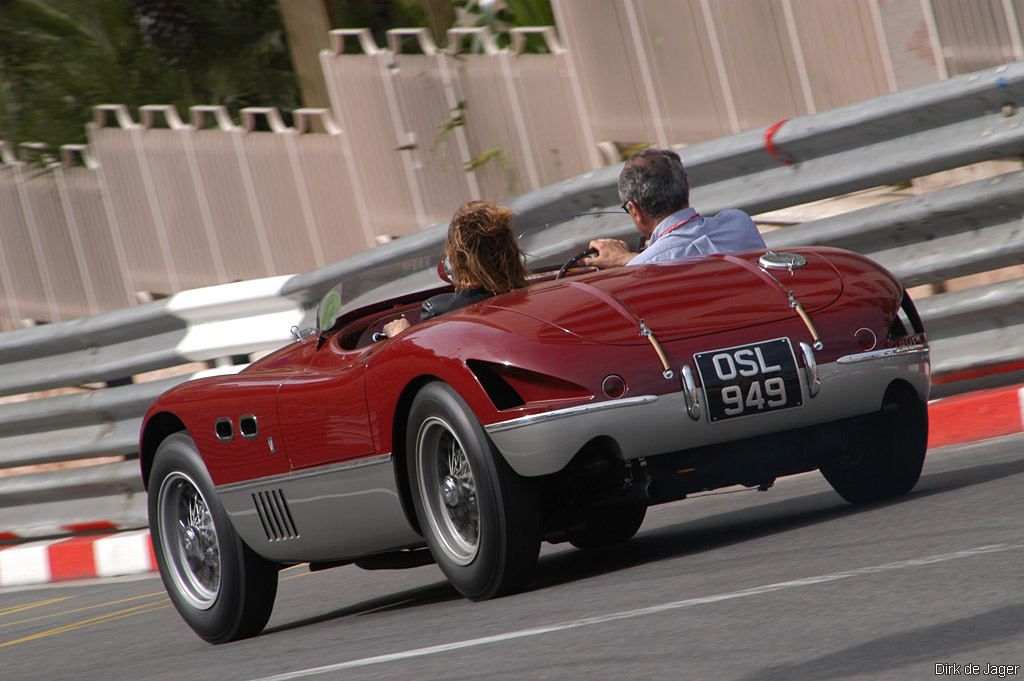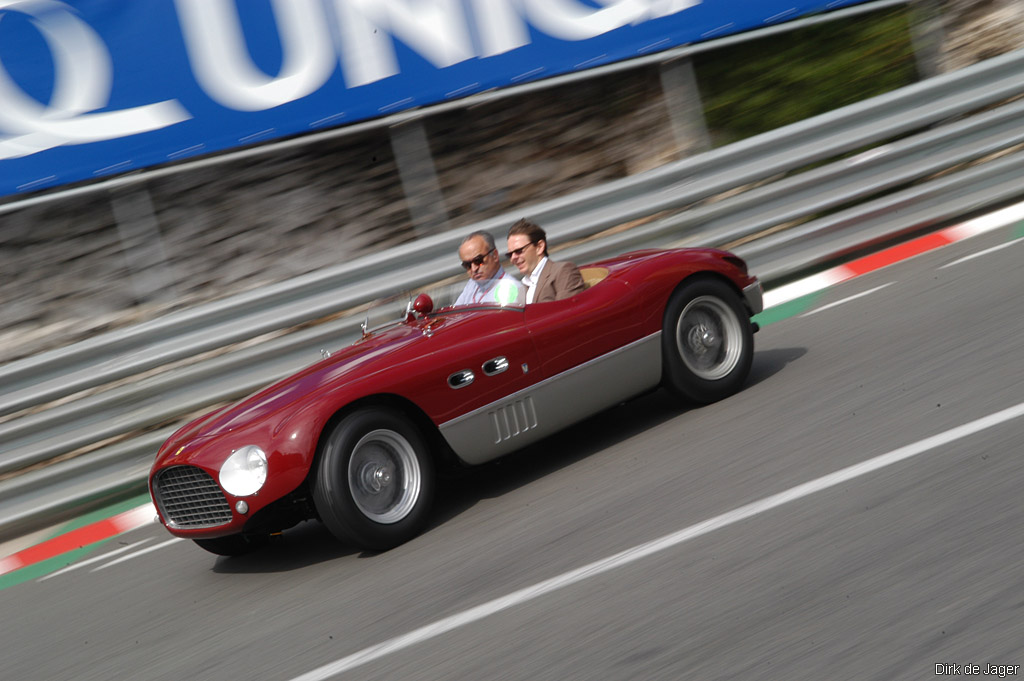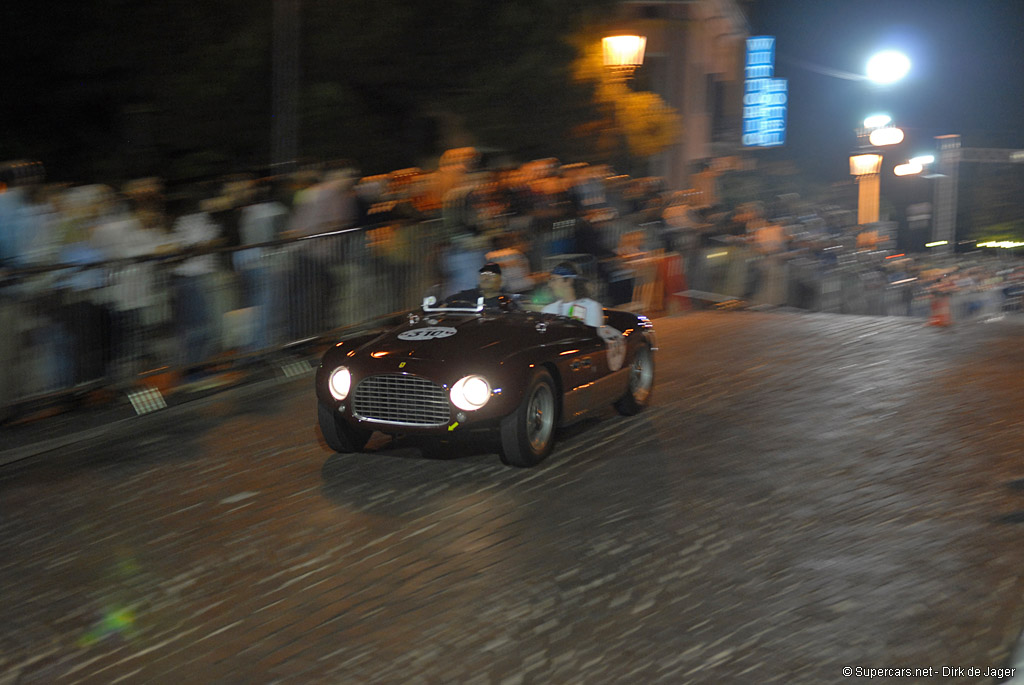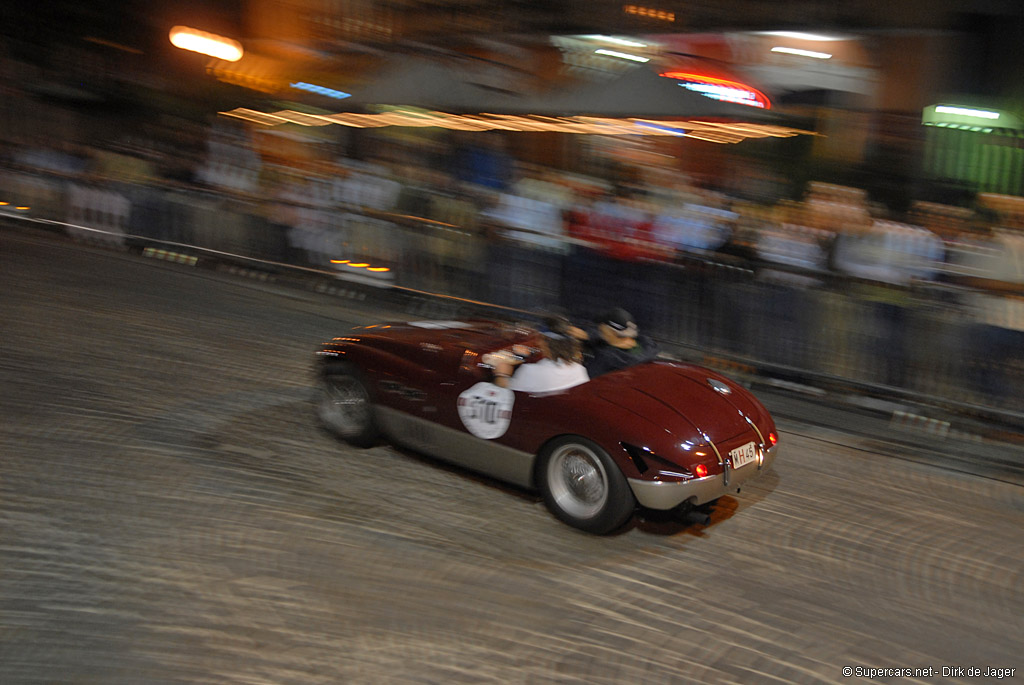1953 Ferrari 625 TF
Of the three models built, a spider version driven by Mike Hawthorn took fourth position in the Grand Prix at the Autodromo in Monza in June 1953. All three cars (two spiders and one coupe, all with coachwork by Vignale) .
Almost as fast as Enzo Ferrari’s company was started, new engines were being considered and engineered. By 1951, Aurelio Lampredi had replaced the standard V12 in Formula 2 with a smaller four cylinder. Since this new engine helped Alberto Ascari take the World Championship in both 1952 and ’53, it was naturally tried next in a sports car.
Ferrari’s very first four-cylinder sports cars was used either a 3 or 2.5-litre engine and both models were known for their single cylinder displacement of 625 ord 735 cc. Two cars first appeared at the 6th Gran Premio dell’Autodromo at Monza. A sole 625 for Mike Hawthorn raced alongside the 3.0-litre, 4-cylinder car known as the 735S.
It’s hard to believe Ferrari would ever replace the V12, but after the 1950 season in F1, a four cylinder was on the drawing board. Motivation came from HWMs driven by Stirling Moss that were powered by four-cylinder ALTA engines. The performance of this car and the upcoming 2-liter limit on engine capacity was influenced both Enzo Ferrari and designer Aurelio Lampredi to make their own four-banger.
For the 1951 season, Lampredi was given a the task to design a 2.0 and 2.5 four cylinder engines that used the same interchangeable parts. He was convinced that the low rpm torque curve would offer an advantage on twisty circuits. After 100 days, the first prototype engine was complete and ready. It had a DOHC, chain-driven valvetrain, 2 Weber 45 DOE carburetors, a light alloy casting and a displacement of 1985cc that could produce 170 bhp. This combination fit so well within the new Formula 2 rules that Ferrari and Alberto Ascari became world champions.
By 1953, the first 4-cylinder experimental cars rolled out of Maranello with an even more exotic specification. The 2.5-liter design used a single 8-plug distributor where the generator was located on later cars and the camshafts were driven by gears instead of chain drive. This engine was supported by a special steel tube chassis, using fully independent double wishbones up front and a De Dion axle with radius rods and transverse leaf springs at the rear. Braking was provided by oversize drums and the transmission was direct attached to the engine.
Where the V12s got heavier and more powerful, the 625 TF was able to become lighter and more nimble. On many courses they could hold their own and were reliable enough to make promising finishes.
Probably only three 625 TFs were made and at some point these may have been fitted with 3.0-liter engines. All the cars featured lightweight aluminum bodies from Vignale. Two of these were very similar to Vignale’s earlier roadsters on the 166MM/53, with portholes, covered headlights, triangular cutaways and minimal windscreens. A sole coupe (berlinetta) was made and lost in a fiery accident. Since the 625s used side draft carburetors, they didn’t need power bulges on the hood like their big brother V12 models.
0304TF seen above is the only known survivor among the three 625 TFs. It raced for over a decade in South America, including four times in the Buenos Aires 1000km. It was sold at Christie’s Geneva Auction for $889 560 USD and has raced the Mille Miglia Retrospective many times. More recently, it has undergone a comprehensive restoration.
Although none of the 625s scored any major success, they motivated development of the 500 Mondial in 1954, the 750 Monza in 1955 and eventually the 860 Monza.
Ferrari 625 TF Pictures & Image Gallery
Specs & Performance
| submitted by | Richard Owen |
| type | Racing Car |
| built at | Maranello, Italy |
| coachbuilder | Vignale |
| production | 3 |
| engine | Light Alloy Inline-4 |
| position | Front Longitudinal |
| valvetrain | SOHC 2 Valves / Cyl |
| displacement | 2498 cc / 152.4 in³ |
| bore | 94 mm / 3.7 in |
| stroke | 90 mm / 3.54 in |
| compression | 9.0:1 |
| power | 164.1 kw / 220.1 bhp @ 7000 rpm |
| specific output | 88.11 bhp per litre |
| bhp/weight | 301.51 bhp per tonne |
| body / frame | Aluminum Body over Steel Tube Frame |
| driven wheels | RWD |
| front brakes | Hydraulic Drums |
| rear brakes | Hydraulic Drums |
| f suspension | Double Wishbones w/Transverse Leaf Spring, Houdaille Lever Arm Shock Absorbers |
| r suspension | De Dion Axle w/Radius Rods, Transverse Leaf Spring, Houdaille Lever Arm Shock Absorbers |
| curb weight | 730 kg / 1609 lbs |
| length | 2250 mm / 88.6 in |
| width | 1278 mm / 50.3 in |
| height | 1284 mm / 50.6 in |
| transmission | 4-Speed Manual |
Sources & Further Reading
1.Roush, Gerald. ‘Ferrari’s Four-Cylinder Sports Cars.’Ferrari Market Letter.


